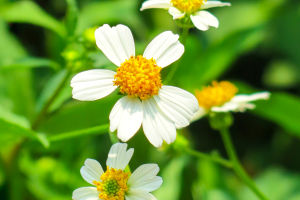When it comes to sprucing up your living space, indoor plants are a fantastic option. Not only do they bring life and color to your home, but they also improve air quality and promote a sense of well-being.
However, choosing the right plants can be a bit tricky, especially when you're unsure of what works in your specific home environment.
This guide will help you make the best choices based on your space, lighting, and lifestyle needs.
1. Understanding Light Conditions: The Key to Success
Plants thrive based on the amount of natural light they receive. Understanding the light conditions in your home is crucial in selecting the right plants. Light can be classified into three main categories: bright light, indirect light, and low light.
Bright Light: If you have large windows that let in plenty of sunlight, you'll want plants that can handle direct sun exposure. Succulents and cacti are perfect for this type of light, as they have adapted to survive in hot, sunny environments. Some flowering plants, like hibiscus or bougainvillea, also thrive in bright light.
Indirect Light: Most homes fall into this category. This is when your plants receive bright light but not direct sun. Here, you'll want to consider leafy plants that don't require too much sunlight, such as spider plants, pothos, and peace lilies. These plants can still do well in areas like the back of a living room or near windows that have light filtering through sheer curtains.
Low Light: For spaces like bathrooms or rooms with minimal windows, plants like snake plants and ZZ plants are your best friends. These plants are known for their ability to survive with minimal light, making them ideal for spaces that don't get direct sunlight.
Before you choose your plant, take a moment to evaluate how much sunlight a particular space receives throughout the day. You might even want to track the lighting for a few days to understand the natural light patterns.
2. Size Matters: Match Plants to Your Space
The size of your living space is another key factor in plant selection. Not every plant is suitable for every room. Larger plants can be overwhelming in smaller rooms, while tiny plants may get lost in expansive spaces.
Small to Medium Spaces: If your space is more compact, consider smaller plants like aloe vera, snake plant, or pothos. These plants don't need much space to thrive and can be placed on shelves, window sills, or small tables. They won't take up too much real estate, but still bring a touch of greenery to your space.
Larger Spaces: If you have more room to work with, you can get creative with larger, statement plants. Fiddle leaf figs, rubber plants, and monstera are perfect for filling corners or acting as focal points in a room. These plants can grow quite tall and wide, so be sure to have enough room for them to expand.
Don't forget about vertical space—hanging plants are a great way to save space while adding beauty to your home. Trailing plants like string of pearls or English ivy look stunning when hanging in a basket or decorative planter.
3. Low-Maintenance vs. High-Maintenance: Consider Your Lifestyle
Let's face it: not everyone has a green thumb or the time to care for finicky plants. If you're someone who prefers low-maintenance plants, there are plenty of options that don't require constant attention.
Low-Maintenance Plants: Plants like snake plants, ZZ plants, and pothos are incredibly easy to care for. They only need occasional watering, can tolerate a range of light conditions, and don't require frequent repotting. These plants are ideal for busy professionals, beginners, or anyone who doesn't have a lot of time to dedicate to plant care.
High-Maintenance Plants: If you have more time and enjoy the process of plant care, you can experiment with high-maintenance plants that need more attention. For example, orchids and ferns are beautiful but demand a little extra care in terms of humidity, watering schedules, and pruning. These plants often thrive in specific conditions, and learning how to care for them can become a rewarding hobby.
4. Containers and Soil: The Unsung Heroes
It’s easy to focus solely on the plant itself, but the container and soil you use can make a significant impact on its health and growth.
Containers: Make sure the container has proper drainage holes. Without good drainage, water can accumulate at the bottom, leading to root rot. You'll also want to choose a container that’s appropriately sized for your plant—too small, and the roots won’t have enough room to grow; too large, and the soil may stay too wet.
Soil: Different plants require different types of soil. Succulents, for example, thrive in well-draining cactus mix, while tropical plants like ferns may do best in a moisture-retentive potting mix. Be sure to choose soil that aligns with your plant's specific needs.
5. Air Quality and Health Benefits
Indoor plants are more than just beautiful décor—they can also enhance the quality of the air in your home. Plants naturally filter out toxins from the air, improving your indoor environment and making it healthier for you and your family.
Some plants are particularly good at purifying the air, such as peace lilies, spider plants, and English ivy. NASA's Clean Air Study, conducted in the 1980s, showed that plants can help reduce the levels of harmful chemicals like benzene, formaldehyde, and trichloroethylene.
Plants are also known to improve mental well-being by reducing stress and boosting mood. A study from the University of Hyogo in Japan found that spending time in environments with plants can reduce heart rate and lower blood pressure, creating a calming effect.
In Conclusion: Choose Plants that Fit Your Life
Selecting indoor plants might seem overwhelming at first, but when you understand your space, light conditions, and how much care you're willing to give, it becomes a lot easier. The key is to match your plants with your environment and lifestyle.
Whether you're an expert plant parent or a beginner just starting, there's always a plant out there for you. So, take a step back, observe your home, and make an informed decision. Your plants will not only beautify your home but can also contribute to a healthier, happier environment.


